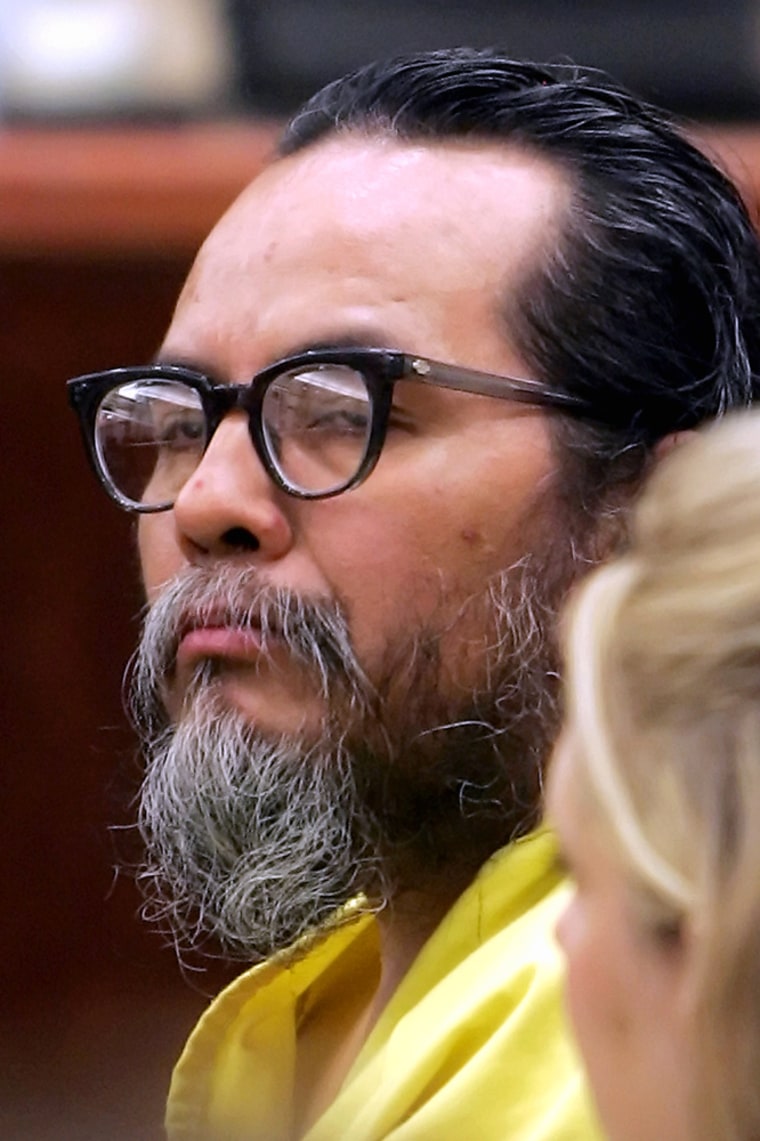A train-hopping serial killer linked to at least 15 murders near railroad tracks around the country said “I deserve what I am getting” before he was executed Tuesday night.
Angel Maturino Resendiz mumbled a prayer, saying “Lord, forgive me. Lord, forgive me,” and acknowledged the presence of relatives watching through a nearby window.
“I want to ask if it is in your heart to forgive me,” he said as he looked toward the relatives of victims in another room. “You don’t have to. I know I allowed the devil to rule my life.”
“I thank God for having patience for me. I don’t deserve to cause you pain. You did not deserve this. I deserve what I am getting,” he said.
Resendiz, 46, was pronounced dead at 8:05 p.m. CDT.
The Mexican drifter known as the “Railroad Killer” was executed for the slaying of physician Claudia Benton 7½ years ago. She was killed during a deadly spree in 1998 and 1999 that earned Resendiz a spot on the FBI’s Most Wanted list as authorities searched for a murderer who slipped across the U.S. border and roamed the country by freight train.
Benton was stabbed with a kitchen knife, bludgeoned with a 2-foot bronze statue and raped in 1998 in her Houston home, just down the street from a railroad track.
Authorities realized they were pursuing a serial killer when DNA evidence tied Resendiz to Benton’s murder and the killings of a church pastor and his wife who were beaten with a sledgehammer as they slept in their house near tracks outside Houston.
A month later, the Mexican drifter walked across the international bridge at El Paso from Mexico and surrendered to police as part of a deal arranged by his sister.
Benton’s husband, George, witnessed Resendiz’s execution “to make the statement that people have to understand what evil really is.”
“What was executed today may have looked like a man, walked and talked like a man but what was contained inside that skin was not a human being,” he said. “This is not human behavior but something I can only say is evil contained in human form, a creature without a soul, no conscience, no sense of remorse, no regard for the sanctity of human life.”
The execution was the 13th of the year in the nation’s most active death penalty state.
The execution was delayed almost two hours before the U.S. Supreme Court rejected several last-day appeals. Resendiz’s lead appeals lawyer, Jack Zimmermann, had argued that his client, who described himself as half-man and half-angel, told psychiatrists he couldn’t be executed because he didn’t believe he could die.
The court also rejected an appeal by the Houston-based consul general of Mexico questioning the Mexican national’s competency and challenging the constitutionality of the lethal injection process as cruel and unusual punishment. Capital punishment is not allowed in Mexico.
“We do look after the rights of Mexican nationals,” Consul General Carlos Gonzalez said. “We watch to make sure the law is applied fairly to a Mexican national.”
Mexico’s Foreign Relations Department protested the execution.
“The execution was carried out despite the existence of medical evidence of severe mental problems that, in principle, should have excluded the application of this penalty,” according to a statement from the agency.
In an interview shortly after arriving on death row in 2000, Resendiz said he recalled the attacks as if were watching something through a tunnel. “Everything you see is in a distance,” he said. “Everything is slow and silent.”
